Did You Know?
Kot Diji Fort was designed to be nearly impossible to conquer, with three layers of defense and a main gate reinforced with 234 iron spikes to stop elephant charges.
27°20'37.2"N 68°42'26.9"E
Kot Diji Fort was designed to be nearly impossible to conquer, with three layers of defense and a main gate reinforced with 234 iron spikes to stop elephant charges.
The Best Time to Visit Sindh Province is Winters. Preferably from September to April Peak Summers (May to August) can get extremely hot with temperatures reaching higher than 40 °C . Hence Summers are not recommended.

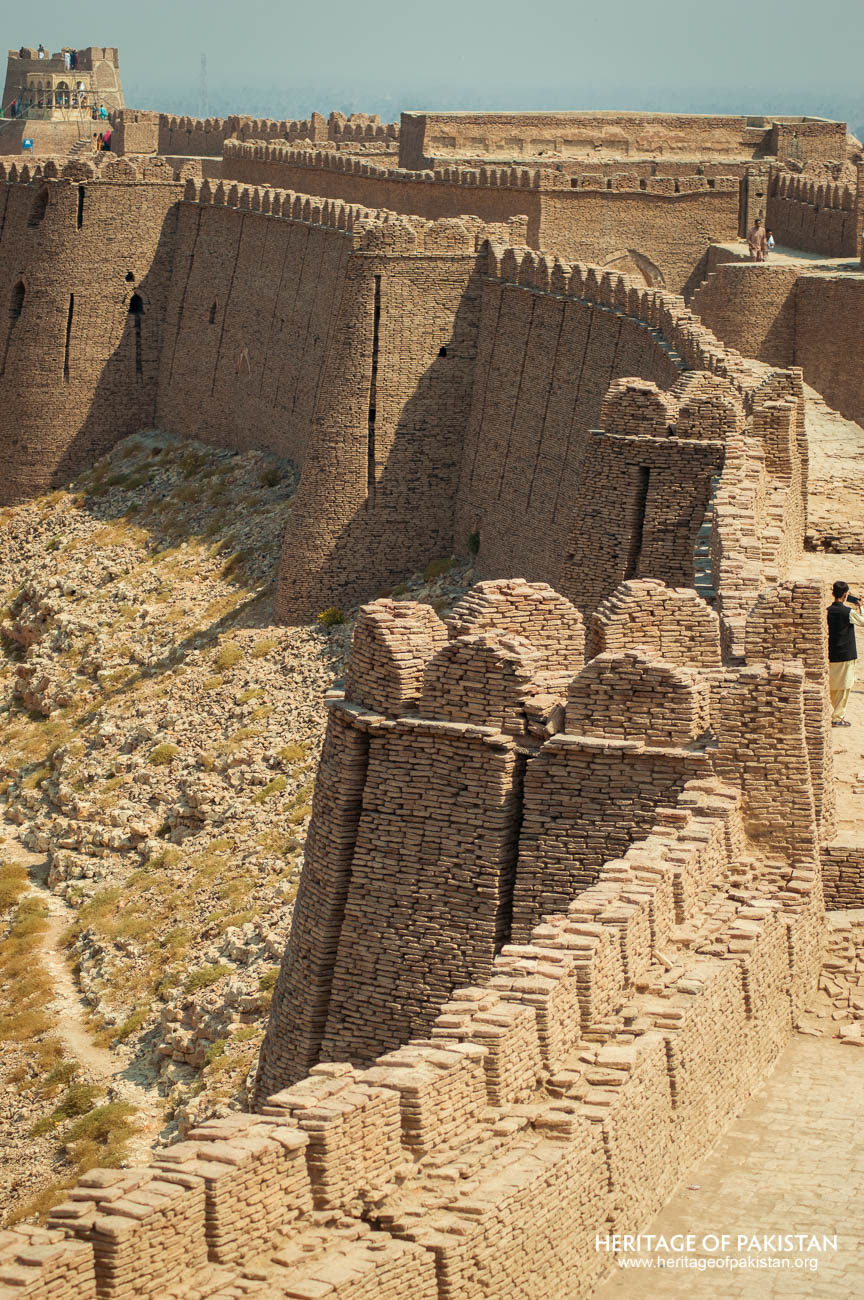
The Kot Diji Fort is a military fortress from the Talpur era in Sindh, and is located in Kot Diji town within the Khairpur District of Sindh, Pakistan. Constructed in 1797 under the commission of Mir Sohrab Khan, the ruler of Khairpur, this fort was originally known as Qila-e-Ahmadabad. It is strategically positioned on top of a monumental limestone hill, overlooking the town of Kot Diji. This elevated placement not only provided a commanding view of the surrounding region but also rendered the fort nearly impregnable due to its strong defensive capabilities. Some historians argue that its military design and positioning made it unconquerable. The fort is situated approximately 25 kilometers from Khairpur city, the administrative headquarters of the district.
The construction of Kot Diji Fort coincided with the rise of the Talpur dynasty, which assumed control over Sindh in 1783 after overthrowing the Kalhora rulers. The Talpurs belonged to the Baloch ‘Hoot’ tribe, and their name is derived from the words ‘Tal’ (tree) and ‘Bur’ (cutting), suggesting that their great ancestors may have been woodcutters. Following their conquest, the Talpurs divided Sindh into multiple regions, with different Mirs ruling various territories. The Khairpur region came under the dominion of Mir Sohrab Khan, who undertook extensive fortification efforts to defend his borders. In addition to the Kot Diji Fort, he constructed several other strongholds, including Imam Garh Fort in the Thar region and Shah Garh Fort on the border of Jodhpur and Jaisalmer.
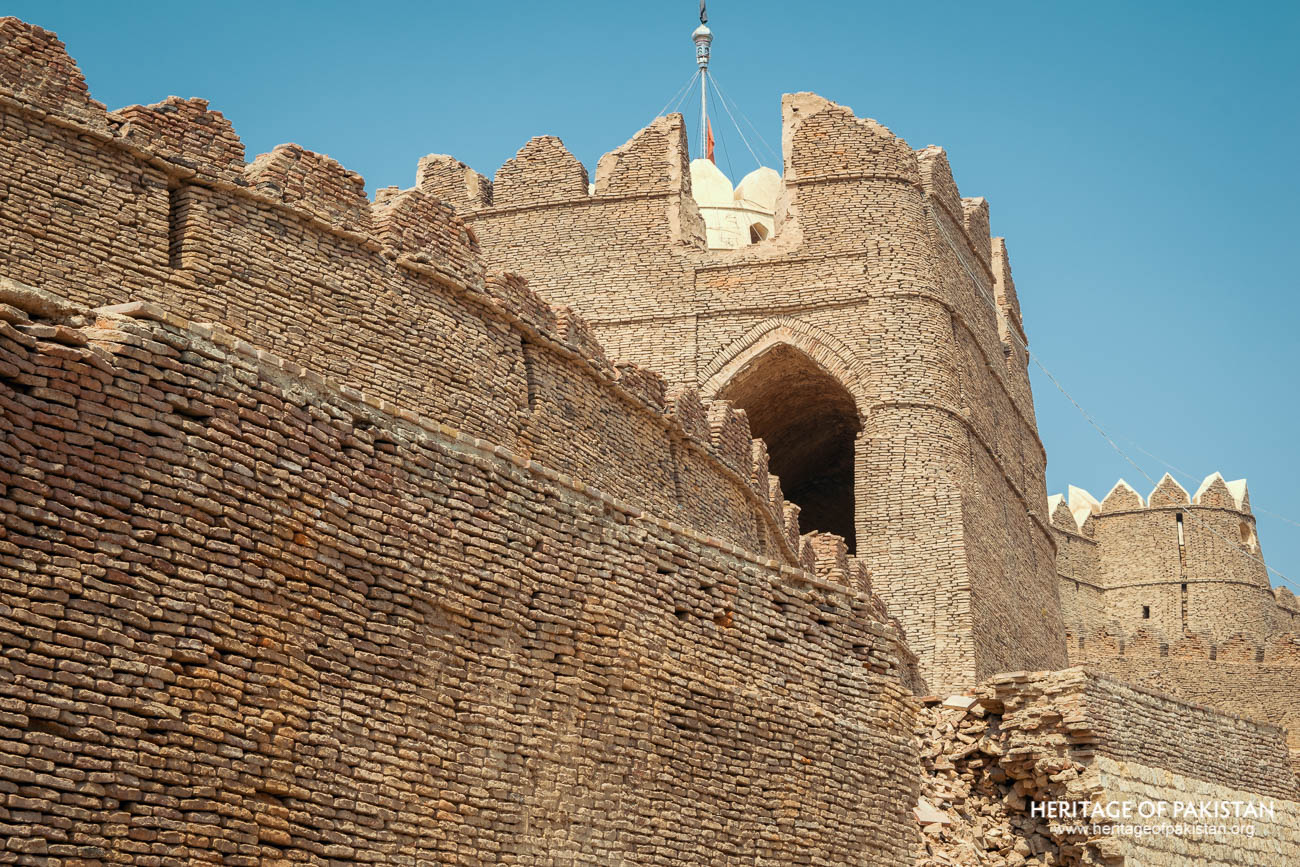
The Kot Diji Fort was considered unconquerable by its founders
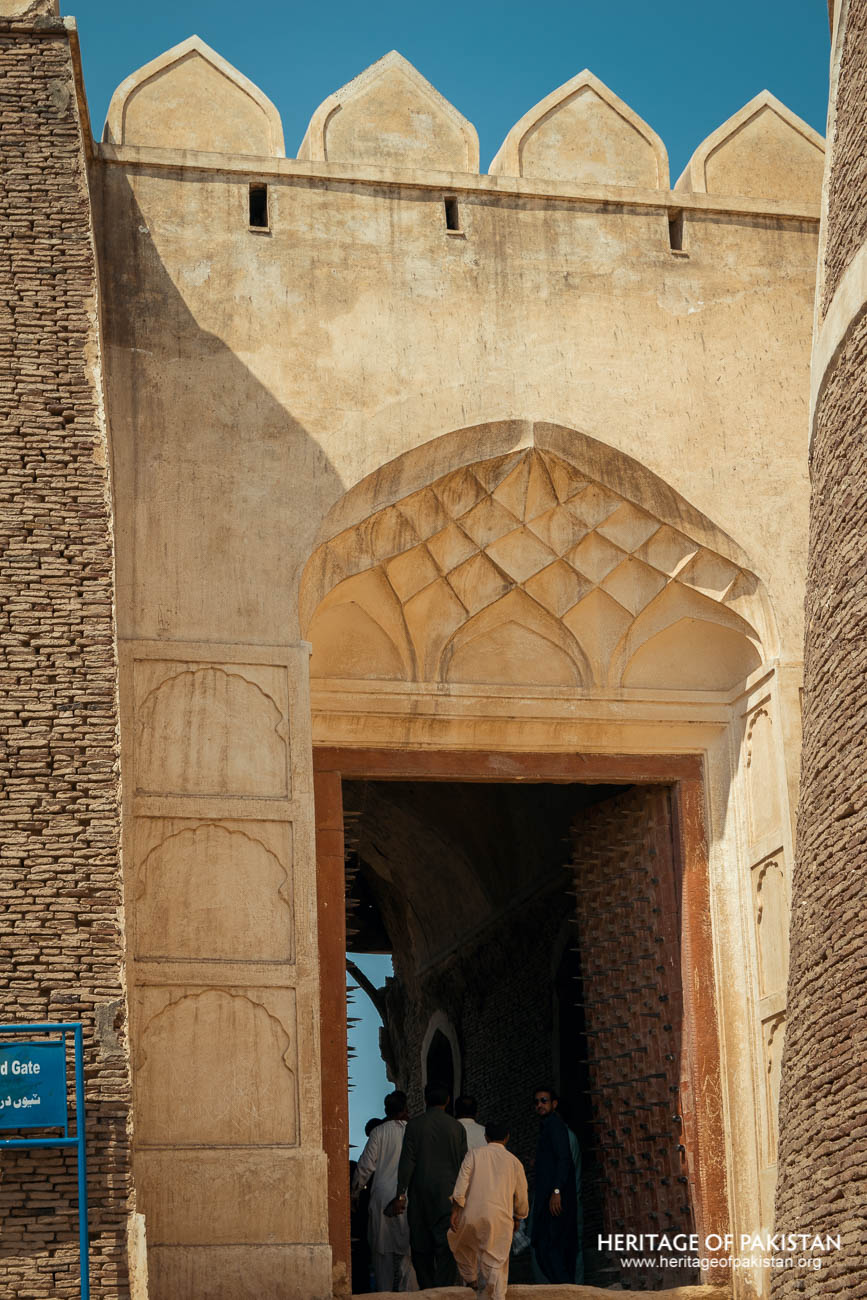
Kot Diji Fort, Sindh
However, the Talpur rule in Sindh came to an end following the British victory in the Battle of Miani in 1843. Mir Ali Murad, who had allied with the British by providing military and financial assistance, was rewarded with control over the Khairpur state. Under his rule, the Kot Diji Fort was repurposed and functioned as a prison for a period of time.
The construction of the Kot Diji Fort was overseen by Sarai Muhammad Salih Zahri Baloch, who was assigned this responsibility by Mir Sohrab Khan. The fort was heavily fortified, with a garrison of approximately 500 soldiers commanded by a single officer. Additionally, it housed around 100 cannons strategically mounted on bastions, reinforcing its military strength. The fort’s elevated location on a hill added to its defensive capabilities, making it extremely difficult for invading forces to breach its walls. The design of the fort reflected the military strategies of the Talpur rulers, who sought to safeguard their territories from potential threats. Its robust construction and strategic positioning played a crucial role in maintaining control over the region.
Beyond its historical and military importance, Kot Diji holds significant archaeological value. Excavations in the vicinity of the fort have unearthed artifacts from prehistoric settlements, including tools from the Stone Age, Paleolithic, and Bronze Age. These discoveries indicate that the region surrounding Kot Diji has been inhabited for millennia, providing critical insights into early human civilizations in South Asia.
The Kot Diji Fort stands as an example of the architectural and strategic ingenuity of the Talpur dynasty. Its construction served not only as a means of territorial defense but also as an assertion of power by the Talpur Mirs. Despite the eventual decline of Talpur rule, the fort remains an important cultural and historical landmark in Sindh. Today, the fort serves as a crucial heritage site, offering valuable insights into the military and architectural advancements of the late 18th century.

The Kot Diji Fort is strategically positioned on top of a high limestone hill, making its defenses nearly impenetrable. Designed primarily as a military stronghold, the fort's placement on a steep ridge ensures that any direct assault is virtually impossible. The high walls, coupled with the elevated terrain, further enhance its defensibility, making it easy to defend and difficult to breach. Constructed primarily using baked bricks measuring 24.13 x 11.43 x 3.81 centimeters, the fort also incorporates stone in certain areas to strengthen its structure.
Ishtiaq Ansari, in his book "Forts of Sindh," provides an extensive account of the Kot Diji Fort, making it a valuable resource for those interested in studying the military architecture of Sindh. The fort's defensive walls follow the narrow perimeter of the hilltop, giving it an elongated shape. This design increases its defensibility, as the narrow width makes it difficult for enemy projectiles to reach the fort's interior. The most crucial sections, including the ammunition depot, water storage tank, and prison, are centrally located, ensuring they remain secure. Access to this central area is restricted and requires passage through multiple layers of security.

View of Bastion of Kot Diji Fort
The fort features three distinct lines of defense, each marked by a heavily fortified gate. To reach the central area, an intruder must pass through all three gates, making any invasion an arduous task. The primary entrance, known as the Shahi Darwaza, faces south and leads to the first level of the fort. Measuring approximately 4.6 meters in height and 3 meters in width, the gate is flanked by two bastions adorned with merlons. The approach to the gate is intentionally narrow, preventing large enemy forces from advancing in large numbers and limiting the possibility of a battering ram attack on the gate. To further fortify the entrance, the wooden door is embedded with 234 sharp iron spikes designed to withstand elephant charges. The second and third gates serve as additional barriers, effectively impeding any unauthorized entry into the main fortress.
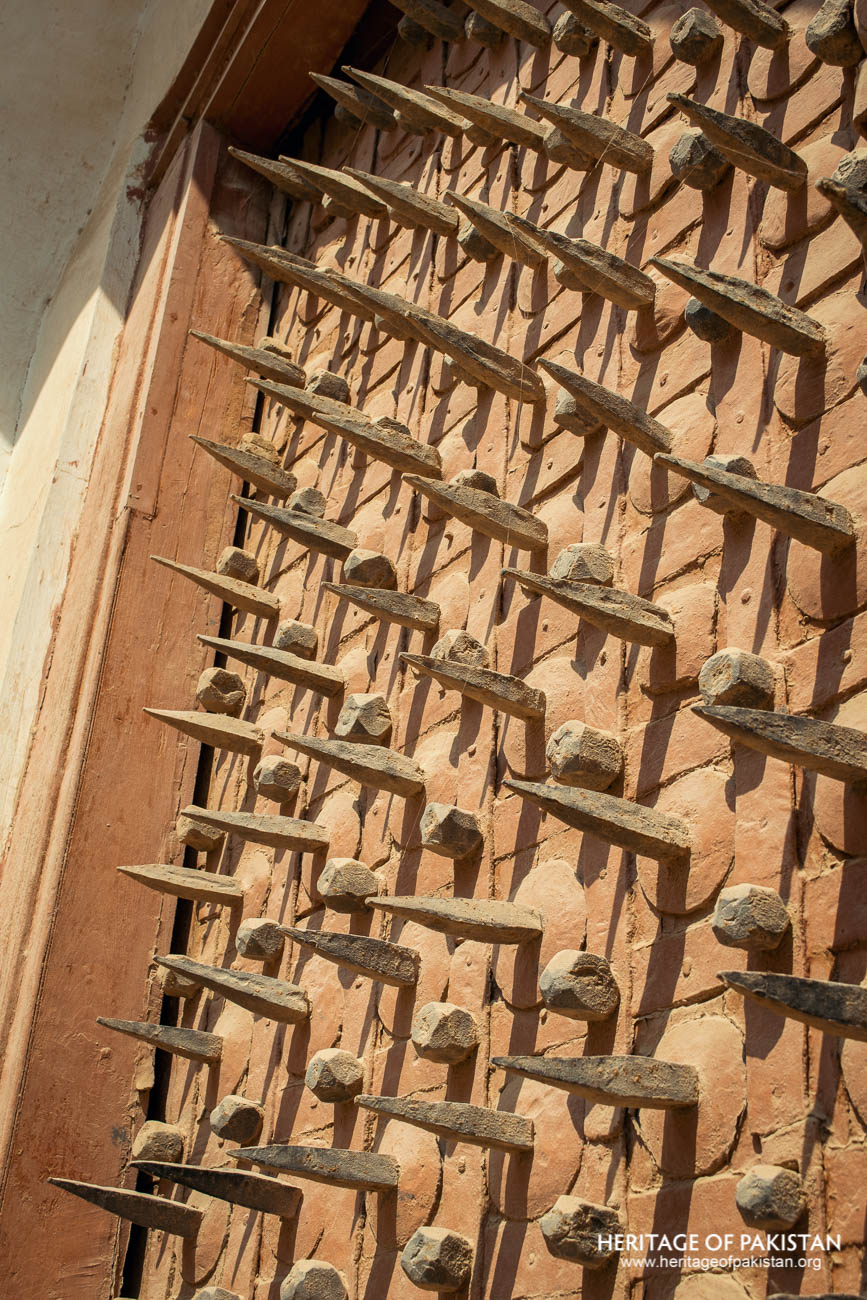
Towering above the third gate is a high bastion known as Fatah Thul, from which the ruling Mir observed the guard of honor. This bastion provided a vantage point from which the entire fort was visible. It also served as the site for flag hoisting, signifying the authority of the rulers. The fort's bastions are strategically placed, serving both as protective structures and as platforms for artillery. Machicolations, which are openings in the battlements, allow defenders to fire arrows, pour hot oil or water, or drop heavy objects onto attackers below. This defensive feature was a standard element in medieval fortress architecture. The bastions of Kot Diji were also equipped with cannon positions, enhancing the fort's ability to repel enemy advances. The lower levels of these bastions functioned as barracks for soldiers stationed at the fort.
Several bastions within the fort hold historical significance. One of the most prominent is the ‘Safon Safa, Mulk Madan’ Bastion, located on the western corner. This bastion enabled guards to monitor enemy movements from multiple directions and derives its name from two cannons, ‘Safon Safa’ and ‘Mulk Madan,’ which were mounted there during the Talpur era. Another key defensive structure is the Shaheed Badshah Bastion on the northwestern side, named after the tomb of Shaheed Badshah, which lies near its foundation. The saint was buried at this site before the fort's construction.
The Jaisalmer Bastion, positioned on the northern side, is named after the city of Jaisalmer, which lies in that direction. Another northern bastion, the Mariam Bastion, is named after a cannon that was once stationed there. This cannon is now displayed at Khairpur City Square, serving as a historical artifact from the fort’s past.
Apart from its military function, the fort also housed a royal residence or harem, where the ruler’s wives and female attendants lived. This section features a spacious hall with two adjoining rooms, and its interiors are adorned with frescoes. The ceiling is painted with floral motifs using lacquer, reflecting the artistic craftsmanship of the era. On the eastern side of the fort, a royal pavilion is constructed on a raised platform. Its entrances are characterized by arches supported by Corinthian pillars, showcasing a blend of local and classical architectural influences.
The Kot Diji Fort, with its intricate design, layered defenses, and strategic positioning, is a great example of military ingenuity of the Talpur dynasty. Today, it remains an invaluable historical site, providing insights into the military and architectural advancements of its time.

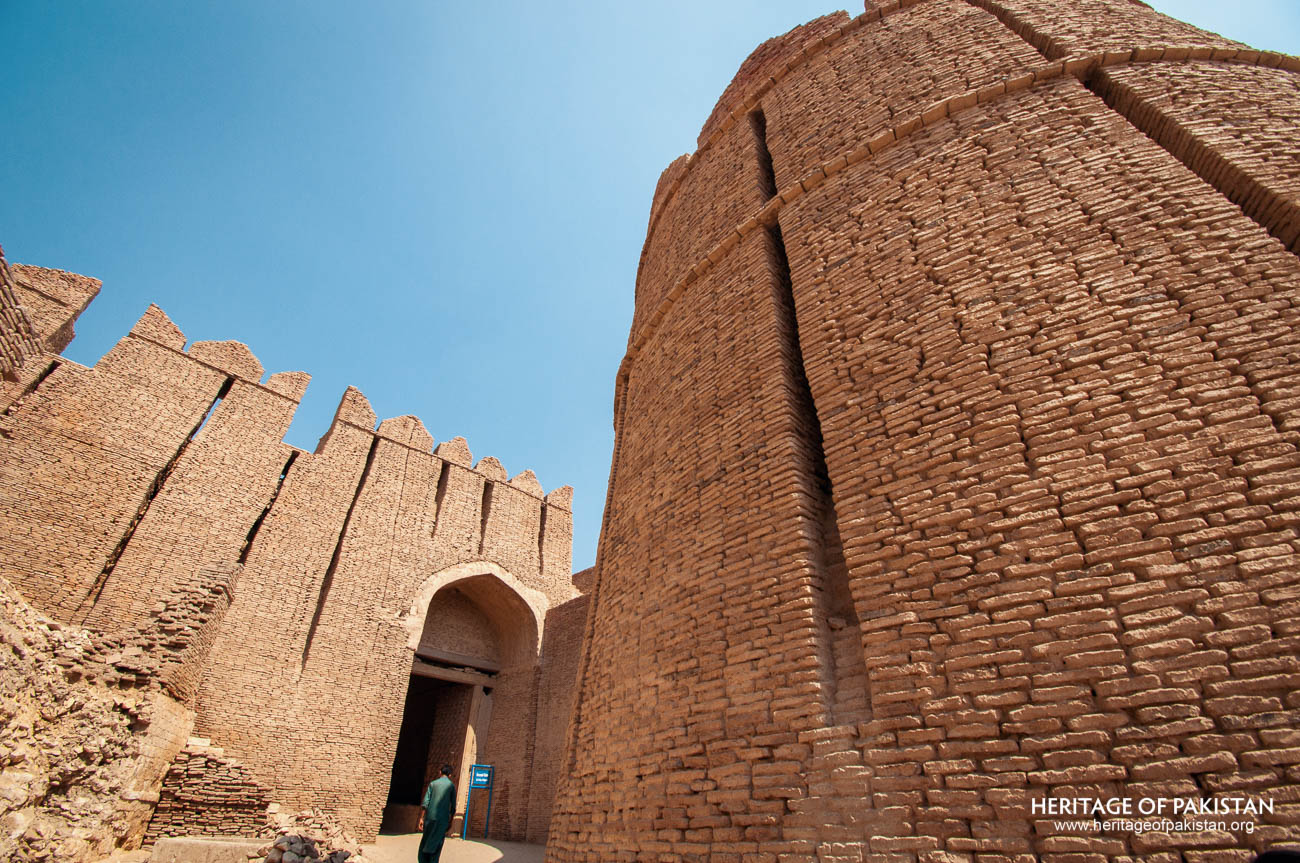
Discover the Kot Diji Fort image gallery and immerse yourself in photographs

All Photographs by Syed Noor Hussain and Sania Azhar.
All Rights Reserved. Photos may be used for Non-Commercial, Educational, Artistic, Research, Non-Profit & Academic purposes.
Commercial uses require licensing agreement.


Add a review